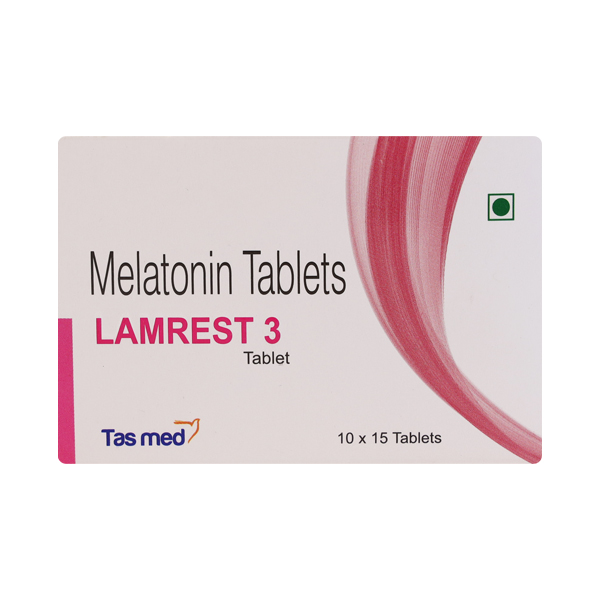How to Sleep Fast in 5 Minutes: Tried and Tested Techniques
We all have those nights where sleep seems impossible. You toss and turn, the clock keeps ticking, and anxiety about the morning starts to creep in. Learning how to sleep fast in 5 minutes might seem like a dream, but with the right techniques, you can significantly reduce the time it takes to drift off. This post will delve into proven methods to help you achieve a quicker and more restful slumber.
Why Do People Have Trouble Falling Asleep?
Before we dive into the techniques, it's helpful to understand why falling asleep quickly can be a challenge. Common culprits include:
Stress and Anxiety
Worries about work, relationships, or life in general can keep your mind racing, making it difficult to relax and fall asleep. This is often exacerbated by our 'always-on' culture and the constant stream of information we're exposed to.
Poor Sleep Habits
Irregular sleep schedules, napping excessively, or engaging in stimulating activities before bed can disrupt your natural sleep-wake cycle (circadian rhythm). This internal clock regulates your body's natural sleep and wake patterns.
Medical Conditions
A range of medical conditions can interfere with sleep, including insomnia, sleep apnea (where breathing repeatedly stops and starts during sleep), restless leg syndrome (an overwhelming urge to move your legs), and thyroid problems.
Diet and Lifestyle
Consuming caffeine or alcohol close to bedtime, eating heavy meals late at night, or lack of physical activity can all negatively impact your sleep.
Environmental Factors
A noisy or bright sleep environment, an uncomfortable bed, or an unsuitable room temperature can make it difficult to fall asleep and stay asleep.
How to Sleep Fast in 5 Minutes? 5 Easy Techniques for Adults
1. The Military Method
This technique, rumored to be developed by the US military to help soldiers fall asleep quickly in high-stress environments, focuses on systematically relaxing your body to calm your mind. Here's how it works:
- Relax your face: Start by consciously releasing any tension in your facial muscles. Close your eyes gently. Let your jaw go slack, unclench your teeth, and smooth out your forehead. Even your tongue should be relaxed, resting lightly in your mouth.
- Drop your shoulders: Imagine your shoulders melting away from your ears. Let them drop as low as they can go, releasing any built-up tension in your neck and upper back.
- Relax one side of your body at a time: Starting with your dominant side, consciously relax your arm, letting it go limp and heavy. Then, move down to your hand and fingers, releasing any tension. Repeat this on the other side of your body.
- Exhale, relaxing your chest: Take a slow, deep breath out, focusing on letting go of any tightness in your chest. Imagine all the stress leaving your body with each exhale.
- Relax your legs: Focus on your legs, letting them sink heavily into the bed. Release any tension in your thighs, calves, and feet. Imagine your legs becoming warm and heavy.
- Spend 10 seconds trying to clear your mind: Now that your body is relaxed, try to quiet your mind. Push away any thoughts or worries. If you find your mind wandering, simply repeat the phrase 'don't think' to yourself for 10 seconds.
2. Breathing Exercises
Controlled breathing exercises can have a powerful impact on your nervous system. By slowing your heart rate and calming your mind, you create the ideal physiological conditions for sleep.
The 4-7-8 Technique
This simple yet effective technique involves a specific breathing pattern:
- Inhale quietly through your nose to a mental count of 4 seconds.
- Hold your breath for 7 seconds.
- Exhale completely through your mouth, making a whooshing sound, to a count of 8 seconds.
- Repeat this cycle at least three more times.
Diaphragmatic Breathing (Belly Breathing)
This technique encourages deeper, more relaxing breaths:
- Lie down comfortably and place one hand on your chest and the other on your stomach.
- Breathe in deeply through your nose, making sure your stomach rises more than your chest. This ensures you are using your diaphragm fully.
- Exhale slowly and completely through your mouth, feeling your stomach fall.
- Continue this breathing pattern for several minutes, focusing on the rise and fall of your abdomen.
3. Progressive Muscle Relaxation
Progressive muscle relaxation is a two-step process where you systematically tense and relax different muscle groups in your body. This helps to release physical tension, which often contributes to difficulty falling asleep.
- Start with your toes: Curl your toes tightly, tensing the muscles for 5 seconds. Then, release the tension and let your toes relax completely for 30 seconds. Notice the difference between tension and relaxation.
- Move up your body: Continue this process, moving up your body, tensing and relaxing muscle groups in your feet, calves, thighs, glutes, abdomen, chest, arms, hands, neck, and face.
- Focus on the sensations: Pay close attention to the feeling of your muscles releasing tension and becoming loose and limp.
4. Mindfulness and Meditation
Mindfulness and meditation techniques help to shift your focus away from racing thoughts and anxieties, promoting a sense of calm and relaxation.
- Guided Meditation: Use a meditation app or listen to calming music with guided meditation instructions. These often involve visualizations, breathing exercises, and body scans to promote relaxation and sleepiness. Many apps offer meditations specifically designed for sleep.
- Body Scan Meditation: This involves bringing your attention to your body, starting with your toes. Slowly scan your body, noticing any sensations (warmth, tingling, pressure) without judgment. Consciously relax each body part as you move your focus upwards, from your toes to the top of your head.
5. Optimize Your Sleep Environment
Your sleep environment plays a crucial role in how quickly you fall asleep and how well you sleep throughout the night.
- Create a dark room: Darkness promotes the production of melatonin, a sleep-regulating hormone. Use blackout curtains or an eye mask to block out any light sources, including electronic devices.
- Maintain a cool temperature: A slightly cool room (around 65 degrees Fahrenheit or 18 degrees Celsius) is ideal for sleep.
- Minimize noise: Unwanted noise can disrupt sleep. Use earplugs or a white noise machine to mask distracting sounds like traffic or a snoring partner.
- Comfortable bedding: Invest in a comfortable mattress, pillows, and bedding that provide adequate support and promote relaxation.
Additional Tips for Adults
- Avoid caffeine and alcohol before bed: Caffeine is a stimulant that can interfere with sleep, while alcohol can disrupt sleep later in the night.
- Take a warm bath or shower: A warm bath or shower before bed can help relax your muscles and raise your body temperature slightly, which can promote sleepiness as your body cools down afterwards.
- Read a book or listen to calming music: Engaging in relaxing activities before bed can help calm your mind and prepare you for sleep.
- Establish a regular sleep schedule: Go to bed and wake up around the same time each day, even on weekends, to regulate your body's natural sleep-wake cycle.
- Avoid screen time for at least an hour before bed: The blue light emitted from electronic devices can suppress melatonin production and interfere with sleep.
By following these healthy sleep habits for quality rest every night, you can ensure restful sleep for yourself.
How To Fall Asleep In 5 Minutes: For Kids
Why Do Kids Have Trouble Falling Asleep?
- Over-Excitement: Children often have trouble winding down after a busy day of play and activities. Their minds are still racing with thoughts and excitement.
- Fear of the Dark or Separation Anxiety: Younger children may experience fear of the dark or anxiety about being separated from their parents at bedtime.
- Irregular Sleep Schedules: Inconsistent bedtimes and wake-up times can disrupt a child's natural sleep patterns.
- Nightmares or Night Terrors: Disturbing dreams can make it difficult for children to fall asleep or stay asleep.
Tips for Helping Kids Fall Asleep Quickly
- Establish a consistent bedtime routine: A predictable routine signals to your child's body that it's time to wind down. This could include a warm bath, reading a story, or quiet playtime. Consistency is key!
- Create a calming bedtime story: Instead of an exciting adventure, opt for a calming story with repetitive phrases or gentle rhymes. This can help soothe their mind and prepare them for sleep.
- Use visualizations: Encourage your child to imagine peaceful scenes, like floating on a cloud, lying on a beach, or exploring a magical forest. This can help distract them from worries and promote relaxation.
- Practice deep breathing: Teach your child simple deep breathing exercises, like blowing bubbles, pretending to blow out birthday candles, or taking slow, deep breaths with a stuffed animal on their belly.
- Cuddle and comfort: Physical touch, like cuddling or gentle back rubs, can be very soothing for children and help them feel safe and secure.
- Create a sleep-conducive environment: Make sure their room is dark, quiet, and cool. A nightlight can be helpful for children who are afraid of the dark. White noise can also help to block out distracting sounds.
In Conclusion
While it's not always possible to fall asleep instantly, these techniques for how to sleep fast in 5 minutes can significantly improve your chances of drifting off quickly. Remember that consistency is important. Incorporate these practices into your nightly routine to enhance your sleep quality and wake up feeling refreshed and ready to take on the day.
FAQs
What is the golden rule of sleep?
The golden rule of sleep is consistency. Go to bed and wake up around the same time every day, even on weekends, to regulate your body's natural sleep-wake cycle and improve your sleep quality.
What is the 10 3 2 1 0 rule for sleep?
The 10 3 2 1 0 rule is a helpful guideline for preparing your body for sleep:
- 10 hours before bed: No more caffeine.
- 3 hours before bed: No more food or alcohol.
- 2 hours before bed: No more work.
- 1 hour before bed: No more screen time.
- 0: The number of times you hit the snooze button in the morning.
What drink is good for sleep?
Warm milk is a classic sleep aid. It contains tryptophan, an amino acid that helps produce serotonin and melatonin, which are sleep-regulating hormones. Chamomile tea is another good option with calming properties.
How to sleep instantly?
While falling asleep instantly is rarely possible, you can try the military method, which involves relaxing your body systematically, or deep breathing exercises like the 4-7-8 technique to calm your mind and body.
How to sleep fast in 10, 30, or 40 seconds?
These timeframes are very ambitious! Focus on relaxation techniques like progressive muscle relaxation or guided meditation to quiet your mind and prepare for sleep. The faster you relax, the quicker you might fall asleep.
For more health-related content, visit our Dawaa Dost website. You will also get access to quality medicines and healthcare products, all at affordable prices. Check it out now!
Disclaimer: This article is intended for informational purposes only and should not be considered a substitute for professional medical advice. Always consult a qualified healthcare provider for the diagnosis and treatment of any health condition.
























